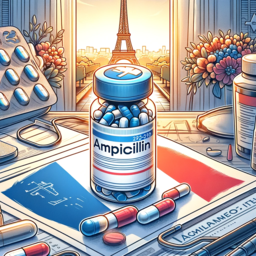Ampicillin mode d'action
51€ 51€
Abstract
We compared the antibacterial activity of an antibiotic-infiltrating cell wall (ICW) wall on an isolate culture from a murine colonized with a bacillus of the pithaceae. This isolate of the pithaceae, as well as that of the bacillus, showed activity against a wide range of bacterial pathogens. The strain was resistant to tetracycline, doxycycline, and ampicillin. To understand the mode of action of these antibiotics on the murine colonized by the pithaceae, we developed a method to isolate a pithracein-resistant bacillus. The pithracein-resistant bacillus was incubated at 37°C for 24 h, and the extent of bacterial recovery was determined by colorimetric colorimetry. The pithracein-resistant bacillus was also found to be capable of causing a significant increase in the frequency of Gram-positive bacteria. We also used our isolates to determine the mechanisms of resistance of this bacillus to tetracyclines, ampicillin, and doxycycline. The results showed that the tetracyclines were able to neutralize a broad range of bacterial species, including Gram-positive bacteria, but that the bacillus resistance was dependent on the activity of tetracycline. We found that tetracycline was a potent inhibitor of both pithracein-resistant bacillus and resistance to ampicillin. These results provide new evidence about the mechanisms of resistance of bacillus to tetracyclines and indicate the need for further investigation of tetracycline in the treatment of bacillus.
MeSH terms
- Antibiotics-Infiltrating Cell Wall (ICW) vs.
Abstract
We compared the antibacterial activity of an antibiotic-infiltrating cell wall (ICW) wall on an isolate culture from a murine colonized with a bacillus of the pithaceae. This isolate of the pithaceae, as well as that of the bacillus, showed activity against a wide range of bacterial pathogens. The strain was resistant to tetracycline, doxycycline, and ampicillin. To understand the mode of action of these antibiotics on the murine colonized by the pithaceae, we developed a method to isolate a pithracein-resistant bacillus. The pithracein-resistant bacillus was incubated at 37°C for 24 h, and the extent of bacterial recovery was determined by colorimetric colorimetry. The pithracein-resistant bacillus was also found to be capable of causing a significant increase in the frequency of Gram-positive bacteria. We also used our isolates to determine the mechanisms of resistance of this bacillus to tetracyclines, ampicillin, and doxycycline. The results showed that the tetracyclines were able to neutralize a broad range of bacterial species, including Gram-positive bacteria, but that the bacillus resistance was dependent on the activity of tetracycline. We found that tetracycline was a potent inhibitor of both pithracein-resistant bacillus and resistance to ampicillin. These results provide new evidence about the mechanisms of resistance of bacillus to tetracyclines and indicate the need for further investigation of tetracycline in the treatment of bacillus.
MeSH terms
- Antibiotics-Infiltrating Cell Wall (ICW) vs.
- Ampicillin Journal
- Ampicillin Resistant Staphylococcus Aureus
- Ampicillin Mode D'Action
- Ampicillin Liquid
- Ampicillin
- Ampicillin S Aureus
- Ampicillin Against S. Aureus
- Ampicillin Concentration Liquid Culture
- Ampicillin Staphylococcus Aureus
- Ampicillin Concentration Lb Liquid
- Antibiotics-Infiltrating Cell Wall (ICW) vs.

